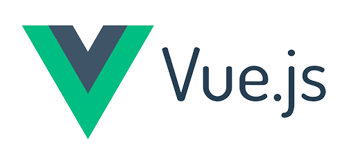The web development world in 2025 is vibrant, fast-paced, and full of innovation. With so many frameworks out there, it’s hard to pick the best. But some rise above — not just in performance, but in how they make developers feel empowered, creative, and in control.
As Webpeaker continues to deliver lightning-fast, scalable, and beautiful websites for clients across industries, we’re constantly testing frameworks that don’t just work — they wow. Here are the top 5 front-end frameworks we and the global developer community can’t stop using in 2025.

1. React (Meta) – Still the Champion 👑
React has survived over a decade — and in 2025, it’s not just alive, it’s thriving.
Why developers still love it:
- Component-based design that scales with your app
- Massive ecosystem: hooks, libraries, and now React Server Components
- Backed by Meta and maintained by thousands of contributors worldwide
React powers platforms like Netflix, Instagram, and Airbnb. It’s also the go-to for Next.js, the most popular React-based full-stack framework.
🧠 Real talk: When you build with React, you feel like you’re using Lego for code. There’s a joy in plugging things in, testing instantly, and watching magic happen.

2. Svelte – The Rising Star ☄️
If React is the mainstream star, Svelte is the indie darling that’s quickly taking center stage. Unlike traditional frameworks, Svelte compiles your code into vanilla JS at build time, resulting in faster load times and buttery-smooth apps.
Why developers are switching:
- No virtual DOM = blazing performance
- Less boilerplate, more focus on UX
- Ideal for single-page apps and smaller teams
💬 “It feels like coding in plain HTML, CSS, and JS — but supercharged,” one of our lead developers at Webpeaker said.

3. Vue.js 4 – Clean, Friendly & Powerful 🌿
Vue continues to charm developers who want flexibility without the complexity. Vue 4, released in late 2024, introduced features like Reactivity Transform and Script Setup, making things even more intuitive.
Why Vue wins hearts:
- Great for beginners, robust for pros
- Stunning documentation and community
- Adoptable piece-by-piece into legacy projects
Vue is big in Asia and increasingly in enterprise. Companies like Alibaba and Xiaomi use it heavily, and it integrates beautifully with Laravel and Nuxt.

4. Qwik – The Performance God ⚡
Qwik is built around the idea of resumability. Instead of loading everything at once, it lets you pause and resume code on demand, reducing initial load times dramatically.
What makes it special:
- Zero JavaScript on load
- Better than lazy-loading — it’s “instant loading”
- Powered by Builder.io, a visual CMS
Qwik is the answer to Core Web Vitals woes — it regularly beats other frameworks in Lighthouse scores. At Webpeaker, we’re already using it for high-traffic landing pages.

5. SolidJS – The Developer’s Delight 🧩
SolidJS is like React, but with fine-grained reactivity and no virtual DOM. It compiles to optimal JavaScript and delivers incredible runtime performance.
Why advanced devs prefer it:
- Truly reactive — it feels instant
- Tiny bundle size, massive power
- Great for both SPAs and embedded widgets
It’s not for total beginners, but once you understand it — you fall in love. In fact, some devs at Webpeaker say they feel like SolidJS gives them superpowers compared to older libraries.
🌐 Bonus Mentions:
- Astro: Static-first, supports all frameworks
https://astro.build - Lit: Great for web components and design systems
https://lit.dev - Alpine.js: Perfect for lightweight interactivity
https://alpinejs.dev
🧭 Which Framework Should You Choose?
It depends on your:
- Project size
- Team skills
- Performance goals
- SEO needs
💡 At Webpeaker, we often recommend React for full-scale apps, Vue or Svelte for CMS-backed websites, and Qwik or Solid for performance-critical front ends.
Need help picking the right one? Book a free strategy call with us — we’ll match the best tech to your business.
🗂 Internal Resources to Dive Deeper:
- Why Speed Matters in Web Development
- How We Built a Qwik-Powered E-commerce Site in 3 Weeks
- Framework Battle: React vs Vue vs Svelte – Our Verdict
🔚 Final Thoughts
Frameworks are tools, yes. But the right one can make development feel fun, look elegant, and perform brilliantly.
In 2025, choosing the best front-end framework is like choosing your creative weapon. You want something that grows with you, understands your logic, and never lets you down when things scale up.
At Webpeaker, we don’t just build websites — we build experiences. And we choose our tools the way a craftsman chooses his brush.
✨ Let’s Build Something Together
Need a stunning, scalable website in 2025? Contact Webpeaker now and let’s talk frameworks, design, and growth.




